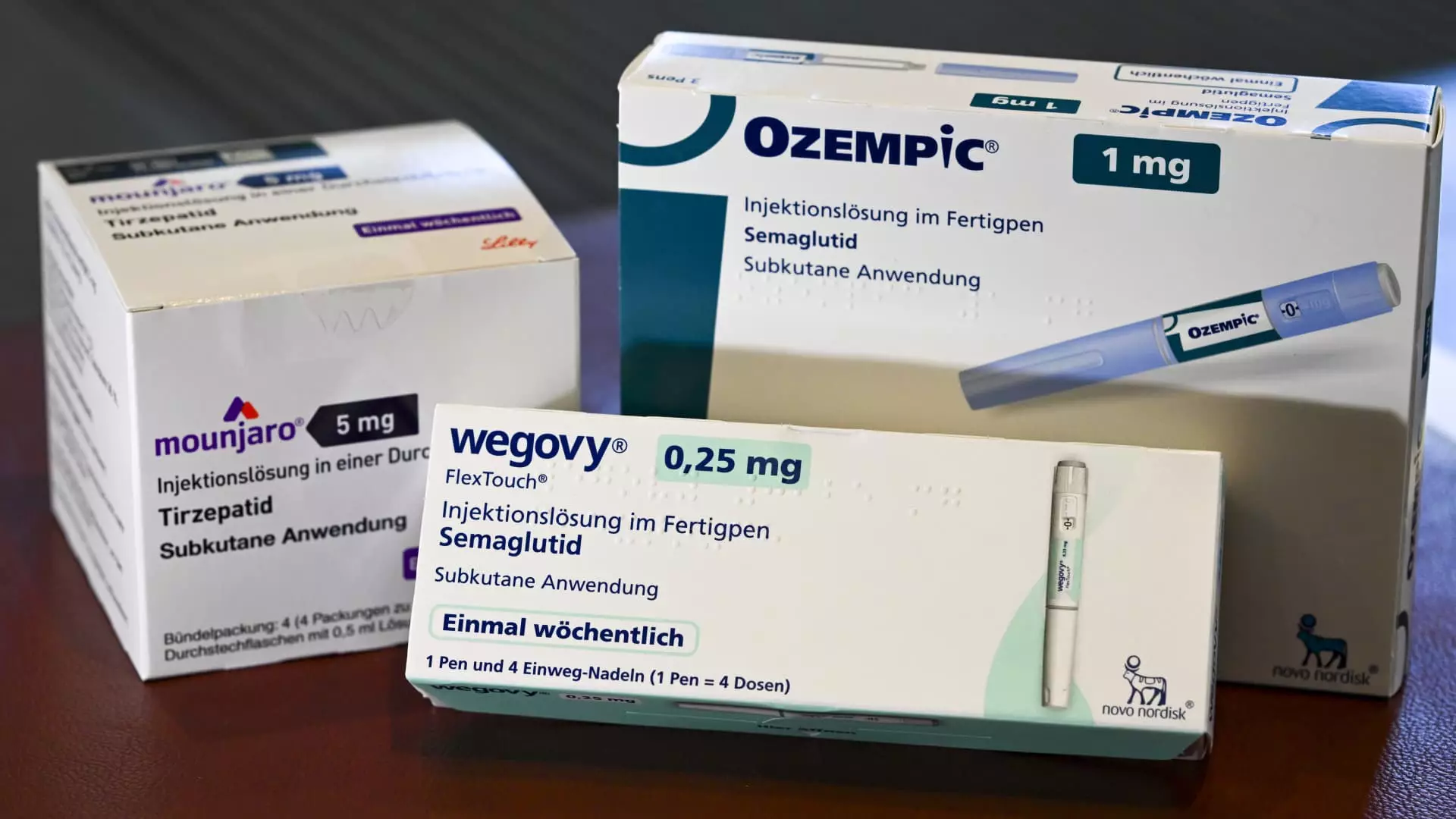In recent years, the economic landscape of healthcare has undergone a remarkable transformation. The surging popularity of weight loss and diabetes medications such as Mounjaro, Ozempic, and Wegovy introduces a dual-edged sword for large employers. While the potential to improve employee health is evident, the ballooning cost of these GLP-1 medications raises legitimate concerns. The burning question looms: will the investments in these pricey drugs eventually translate into tangible long-term savings and enhanced health outcomes for workers?
The answer, as provided by analysts from Aon, is tentatively optimistic. Aon’s CEO, Greg Case, has been vocal about the transformative effects these drugs could have on reducing serious health conditions like cardiovascular issues. However, the financial ramification of these medications must not be overlooked; companies face steep up-front costs which could act as a deterrent for many.
The Reality Behind Medication Costs and Benefit Returns
The financial stakes of GLP-1 medications cannot be dismissed—they carry list prices exceeding $1,000 per dose. This price tag reflects not just a singular medication but also an emerging philosophy regarding how employers can approach overall health management among their workforce. As these drugs gain popularity, a ripple effect is observed: an increase in employer drug spending that outpaces even other specialist medications used for cancer and autoimmune conditions.
Research conducted by Aon involving medical claims data over two years shows that initial investments in GLP-1 drugs can lead to broader health benefits. However, employers must be prepared for the upfront spike in costs. In the first year, patients on these medications often face higher medical expenses, as they require additional medical consultations. This fact may counterbalance the immediate desire for cost control, though the study indicates a decline in overall health care costs after the second year—averaging a 7% reduction for patients and even more substantial savings for those strictly adhering to their regimen.
Short-Term Drawbacks with Long-Term Potential
While the initial spike in healthcare costs might give employers pause, it could be a necessary step towards more substantial long-term benefits. Early on, patients often find themselves needing additional medical support, addressing not only obesity-related issues but also conditions like sleep apnea and acid reflux. For employers watching their bottom line, these immediate costs may seem daunting. However, they necessitate a reframing of how success is measured. Whereas the first year might report losses, the ultimate gains stemming from fewer serious health complications may yield impressive returns.
According to the Aon study, the most considerable cost savings stem from a notable decline in catastrophic health events, such as heart attacks and strokes, for patients taking GLP-1 medications. The staggering 40% decrease in these adverse events suggests a dramatic shift in healthcare dynamics. Employers could see fewer days lost to illness, thus promoting a more engaged and productive workforce.
The Ripple Effect and Broader Implications
It’s essential to recognize that the premise of investing in GLP-1 medications extends beyond mere financial metrics; it reflects a cultural shift in how businesses perceive their role in employee health. As Aon has begun implementing a subsidized program for their workforce, the implications of this strategy signal intent. By providing increased access to these medications along with continuous health support, employers are choosing to invest not just in treatments but in the long-term well-being of their employees.
This approach aligns with a growable economic model that seeks a balance between spending today for savings tomorrow. Employers transitioning toward a proactive health expenditure mindset can potentially reshape the narrative around healthcare costs in the corporate sector. This paradigm shift may lead to a new standard where every dollar spent on employee health is seen as an investment rather than a mere expense.
The results of Aon’s comprehensive study, which will be further unveiled at the Milken Institute Global Conference, highlight the promise of this new era of workplace wellness. What started as a trend toward enhanced health solutions could evolve into a game-changing approach for both employers and employees alike. With healthcare costs spiraling, it seems prudent to consider the full picture—one where prevention and treatment work hand-in-hand to foster a healthier workforce for the future.

